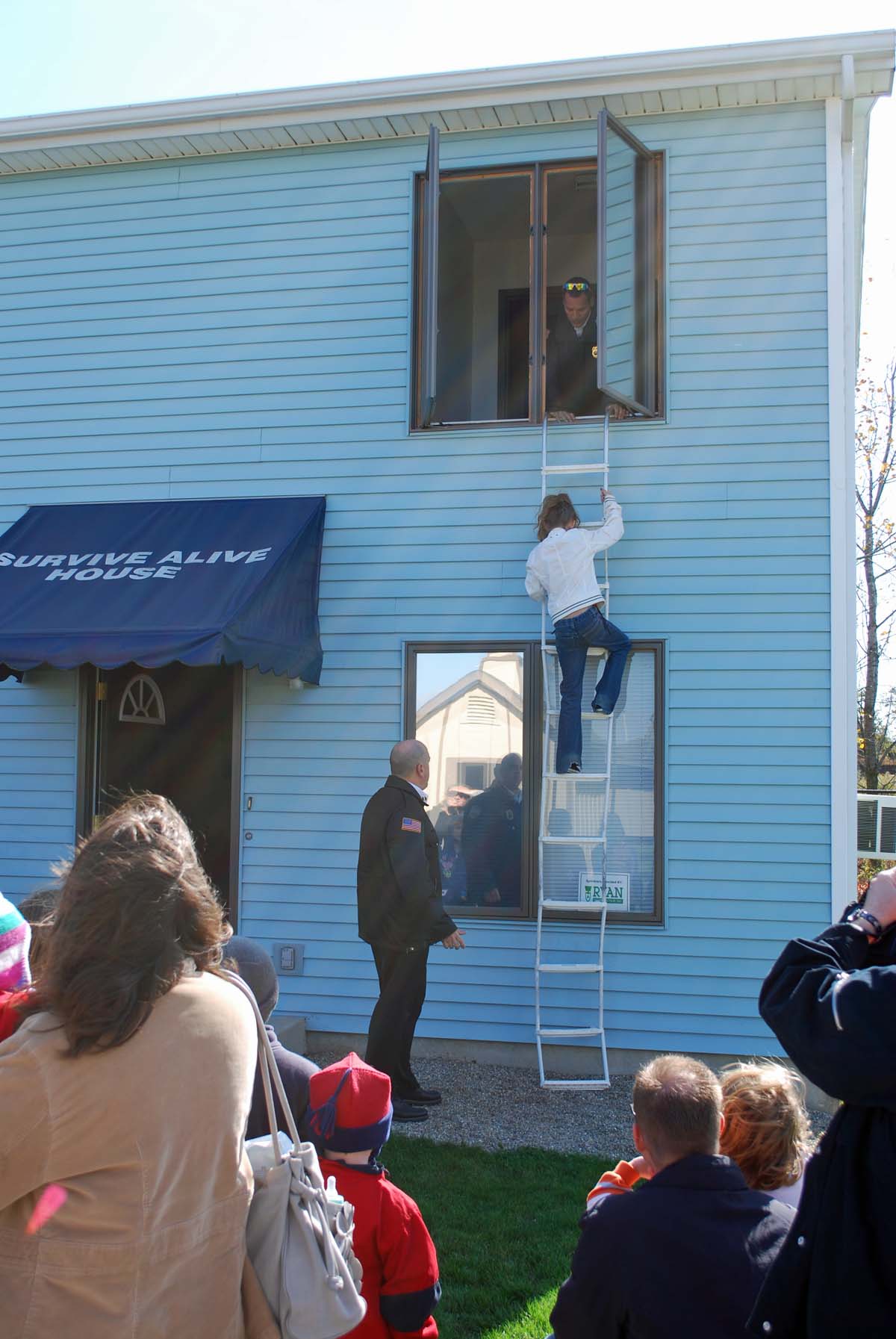Survive Alive/Safety Village Open House
On Saturday, October 15, 2011, the Fort Wayne Fire Department hosted an open house at the Survive Alive House and Safety Village (1275 S. Phoenix Parkway). Beginning at noon the public toured the facility while learning valuable fire safety and prevention tips. 
The Survive Alive House is a full-size two-story residential structure situated in a mock town (Safety Village) and is equipped with state of the art special effects to simulate a real house fire. The special effects include flashing strobe lighting to simulate fire burning; a bedroom door equipped with coils inside the door which can heated via pumped in water to simulate a door becoming hot because of fire; sound effects of an actual fire burning and non-toxic "smoke" from a fog machine which permeates a portion of the house. Guests actively engage in this fire prevention program that includes a hands-on approach to fire safety by teaching evacuation procedures and the proper way of calling 911.
Beginning at approximately 2 p.m. the special side by side burn demonstration dramatically displayed the valuable life-saving capabilities of residential fire sprinkler systems. The demonstration trailer is equipped with two rooms. One room is equipped with sprinklers, the other is not. Both are set ablaze. Guests see first-hand the speed and destruction of fire, but the outcome is dramatically different in the rooms with sprinklers.

Saturday's events wrapped-up the week long efforts by the Fort Wayne Fire Department recognizing the 89th annual National Fire Safety Week, October 9-15. Other FWFD fire prevention initiatives this week included "Neighborhood Smoke Alarm Blitzes" and the annual citywide WOWO Fire Drill.






